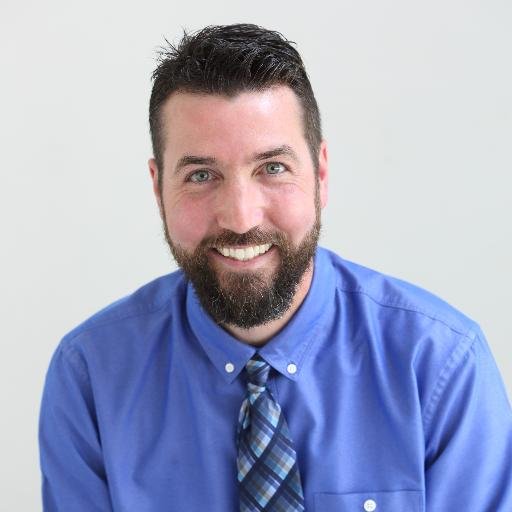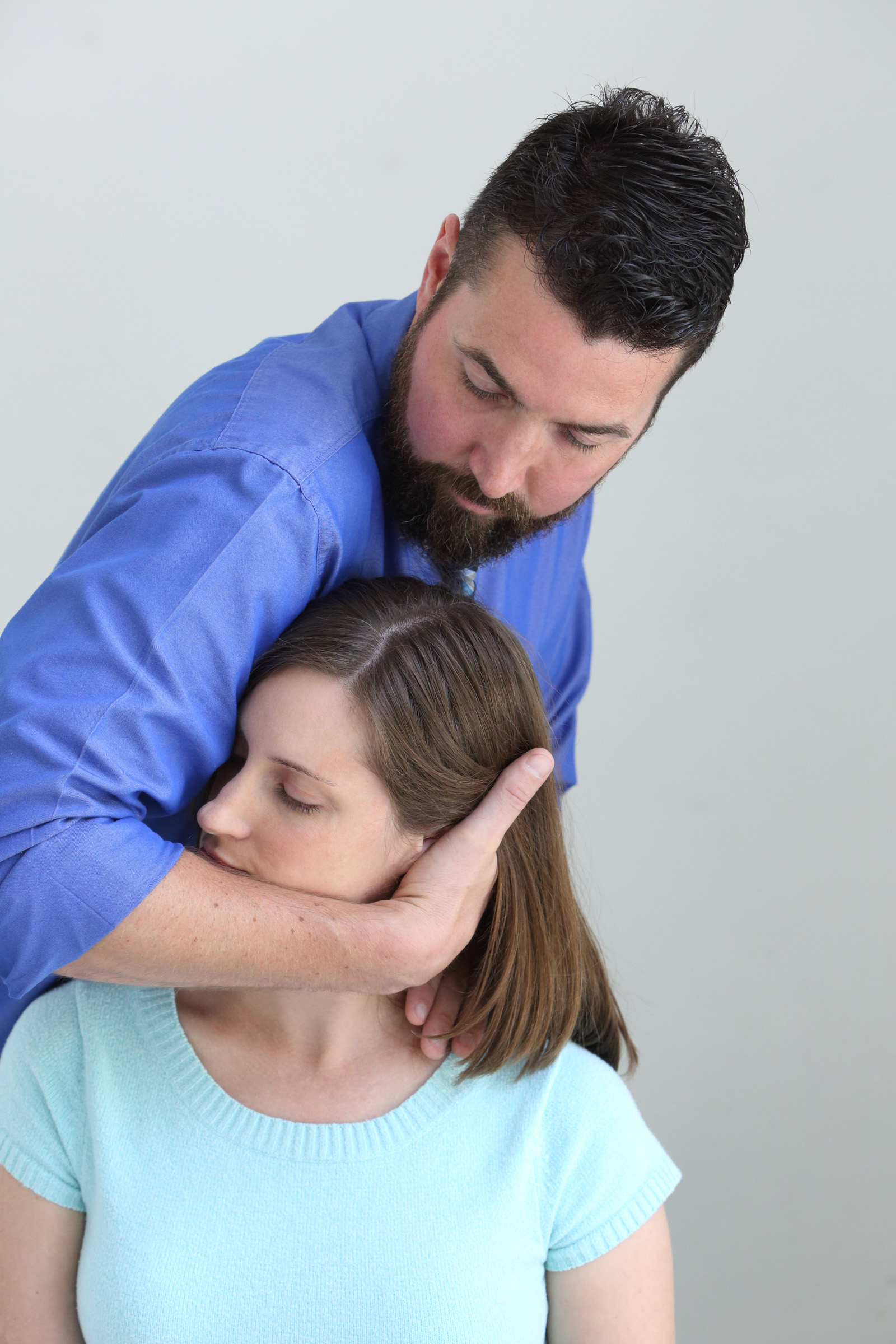photo credit: ptonice.com
1. You have taken numerous continuing education courses in your career, how did the completion of the fellowship advance your clinical and teaching goals? The more I practice our craft the more I believe the big variable is selecting the right intervention, far more so than the nuances of that intervention delivery. Don’t mishear me, a good set of mitts that convey comfort and expertise are a requirement for best practice, but the real magic happens in knowing which patient needs which intervention to which region at what level of vigor…AND having the ability to know whether or not you are making a meaningful difference in their symptom behavior. This is what fellowship taught, how to reason through a patient no matter how complex and get them dialed into a framework that consistently delivers results across a wide range of presentations or complexities.
2. In a recent study authors described the utilization of spinal manipulation by practicing PTs. Of note, was the decreased utilization of cervical manipulation in comparison to thoracic and lumbar manipulation. What do you think are the main barriers to PTs performing this evidence based treatment? It starts in the education system, survey studies have shown that relative to the lumbar and thoracic spine, physical therapy students are less likely to receive education and practice with cervical thrust manipulation. This sends a very clear picture to the student from her/his first mentors which have a very strong effect on eventual philosophy and practice: Cervical thrust manipulation is unsafe and unnecessary. It’s a big ask for someone to go from that starting point to really digging into the evidence and discovering that cervical manipulation is both safe and an important component to effectively managing neck pain patients, particularly when said patients have strong expectations that thrust manipulation would be the most effective treatment. Speaking to this last point a study by Bishop et al in 2013 where they examined patient expectation of benefit for different neck pain interventions found that 75% had a positive expectation that “having their neck cracked” would help. I can’t imagine in an era where we know what we do regarding the correlation between patient expectation and outcomes, and about the efficacy and safety of cervical spine thrust manipulation, not being able to incorporate this intervention with appropriate patients.
photo credit: evidenceinmotion.com
3. In my opinion, there is often a misconception or misunderstanding regarding the available literature on adverse events with spinal manipulation. How would you advise PTs on weighing the benefits and risks of cervical manipulation? The full answer is too long to be well serviced here, but to practice responsibly the clinician needs to have an in depth understanding in a number of areas: vascular pain presentation, hemodynamics of the cervical vasculature in response to positioning, and how to summate thrust manipulation leverages to safely perform these techniques, just to name a few. Some students are going to get this content in graduate school, many others as we discussed above are going to need to seek out courses where this information is covered. Once this understanding is achieved the literature shows that the risk/benefit ratio is in favor of their incorporation with appropriate patients.
4. You have done a great job leveraging social media for your professional endeavors. For the busy practicing clinician, what role should social media play in their clinical practice or as a business owner? Thank you, but I would start by saying I think social media is generally over hyped and over utilized. I think a lot of people get lost in it. There is a significant dose response curve with social media, leveraging it can have some great results both for enhancing your professional skill set as well as leveling up your marketing and outreach. However, there is an amount of time that gives you those benefits beyond which the return on investment becomes far more questionable. I see a lot of folks overdosing on social media. At South College, a DPT program I teach with, we educate the students on “selective trending”, meaning be very picky about who you follow so that your time on social media is highly concentrated with value. From an actual time standpoint I think 30-45 minutes a day to see what is being discussed among quality circles, and to do a bit of clinic promotion is a very reasonable investment. I think less than that and you are missing the opportunity to pull a very effective lever but a whole lot more and the squeeze no longer delivers much juice.
5. In a crowded continuing education market, what separates your Institute of Clinical Excellence (ICE) courses from the herd? That is a hard question because I honesty spend very little time evaluating the rest of the cattle in the herd. We love deeply what we do, and we are borderline maniacal about tuning up PTs in key areas that allow them to effectively engage in market opportunities where patients could benefit from their expertise. One thing is for certain, I am absolutely in awe at the talent level of our faculty. In building this company I intentionally teamed up and built content with individuals who I deeply admired and wanted to learn from myself, and amazingly they have all stayed on board to allow our company to offer the extensive course catalog that we do today. We just had our ICE Sampler out in Portland and I was yet again blown away by the level of expertise and care that our faculty demonstrates, I found myself thinking I better find a way to take it up a notch or I’m going to get cut from this team! It’s so incredible to be able to work side by side with individuals that you respect this much and I’m grateful every single day that I get the opportunity to do so.
Another thing that jumps out is how deeply devoted to health we are as a group, both our own health and the health of those we come alongside. I think you see this most obviously in our Applied Prevention Health Promotion and Fitness Athlete courses, but it extends into every one of our offerings all the way to our Management of the Older Adult offering where Christina Nowak and Dustin Jones aren’t going to pull out any stops in allowing older folks to get after their fitness! Further evidence is seen in our weekend seminars where a cool tradition has developed over the years that we always workout with the group after class ends on Saturday. Sometimes it is a 5 mile run, other times a group bike ride or a partner WOD, but you can always plan on the ICE faculty coming to the course ready to get their heart rate up for an hour with anyone interested! It’s cool to hear from clinicians who went to my courses in years past saying “Hey Jeff do you remember that time we ran together in Flint Michigan!? (or Traverse city, or Milwaukee, or Orange County….)” This tradition started very organically but I now look forward to it as a chance to bond with our students and ultimately to make sure we are putting our money where are mouths are, because if you aren’t doing it you shouldn’t be preaching it.
6. If you could change one or two things about our profession what would it be and why? We struggle to embrace the concept of ‘And’ versus ‘Or’. We swing the pendulum and go from thinking everything should be about manipulation to thinking everything should be about pain science and essentially be hands off. From my perspective the answer is almost invariably in the middle ground where a balanced incorporation of our different skill sets crafted into the perfect cocktail of interventions for any given patient is the holy grail. We need to stop worrying about what we think is right and instead generate an evidence based set of options that we can discuss with the patient and look to engage in a shared decision making process that incorporates their unique belief system. This type of flexible system demands that we play the middle ground, that we avoid extremes but instead be willing to dance in the gray areas. If we are going for two I hope in the future our profession becomes more willing to be as amazed and proud of other health care professions as we are of our own. Turf battles have done a good deal of damage to mutual respect, and ultimately it has been the patients who have suffered from poor communication, understanding, and cooperation among different disciplines. I really admire physicians who take on the battle of responsible opioid prescription even when it puts them at odds with their patients and brings up challenging conversations in an environment where they are already pressed for time. I’m in awe of personal trainers and coaches who have an uncanny eye for observing movement patterns that might be causing decreased efficiency, who can tell which subtle changes in technique or what accessory work might culminate in better performance. The more we are willing to be amazed by others the more we can learn from them and work together with them, which results in improved care for those we serve, which at the end of the day is what really matters, because it certainly isn’t about us.


